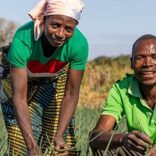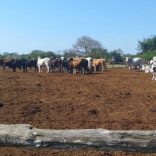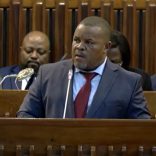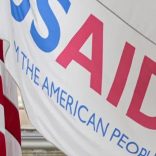Mozambique: Farming through drought
Cabo Delgado accounts for 20% of Mozambique’s timber harvesting quota in 2025

FILE - For illustration purposes only. [File photo: Zumbo FM]
Cabo Delgado province, in northern Mozambique, accounts for 20% of the country’s entire timber harvesting quota, which this year rose to 485,936 m3, according to a resolution by the Council of Ministers.
Resolution 10/2025, of 23 May, defines “quotas for timber harvesting for the year 2025, in order to guarantee the sustainable exploitation of forest resources”, which contrasts with the limit of 485,436 m3 laid down for last year.
READ: Mozambique: Increase in timber harvesting quota approved
In Cabo Delgado alone, the document approves a maximum quota, for all species, of 96,083 m3. The province is followed by Zambézia, with 95,150 m3, and Sofala, with 80,575 m3.
For the first time, Mozambique will authorize the exploitation of the nantchasse species, recently classified as precious wood, but only up to 500 m3, and only from the province of Niassa. Also in the precious wood category, the exploitation of up to 23,250 m3 of blackwood, 10,594 m3 of sandalwood and 17,855 m3 of black chacate, as well as 875 m3 of rosewood, is authorized.
Deforestation in Mozambique has affected 875,453 hectares in four years, although it declined during 2022, mainly in the provinces of Niassa and Zambézia, according to statistical data previously reported by Lusa.
According to a report by the National Institute of Statistics, in 2022, deforestation of various types of forest fell by 31% compared to the previous year, to 209,464 hectares.
The peak of deforestation was recorded in 2021, with 303,689 hectares, of which 264,999 hectares were of semi-deciduous (tropical) forest, 29,258 hectares were of semi-evergreen forest and 99 hectares were mangroves, among others.
In 2019, deforestation in Mozambique affected 199,910 hectares and in 2020 a total of 242,390 hectares.
During the four-year period recorded by the INE, the provinces of Niassa and Zambézia alone saw deforestation of 180,279 and 167,367 hectares, respectively.
A significant part of this deforestation has been recorded in the Miombo forest, which, in addition to Mozambique, crosses into ten other countries in southern Africa, including Angola.
Miombo is the Swahili word for brachystegia, a genus of tree, but the forest hosts a large number of species and makes up the largest tropical forest ecosystem in Africa. It is a source of water, food, shelter, timber, electricity generation and tourism.
On 24 September, the then Mozambican president, Filipe Nyusi, announced in New York that more than US$500 million had been raised at the high-level dialogue on the Miombo Initiative held the previous day.
“We managed to convince the world that the Miombo needs to be protected. This requires resources, but we humbly state that management must be carried out with maximum transparency, because the Miombo does not belong to Mozambique alone,” said Filipe Nyusi told journalists.
The event brought together dozens of North American businesspeople who are donors to the project and African leaders, including the then President of Botswana, Mokgweetsi Masisi, and the President of Malawi, Lazarus Chakwera.
“It was clear that there was over US$500 million in financial support from donors, but I don’t think the number will stop there. That’s why I say that we need to create a management mechanism, because it’s a regional project,” insisted Nyusi, guaranteeing that Miombo was “now on the world map”.
The Miombo forest covers two million square kilometres and provides the livelihood of over 300 million inhabitants of 11 countries in southern Africa. It includes tropical and subtropical grasslands, thickets and savannas and is the largest ecosystem of dry tropical forests in the world.












Leave a Reply
Be the First to Comment!
You must be logged in to post a comment.
You must be logged in to post a comment.